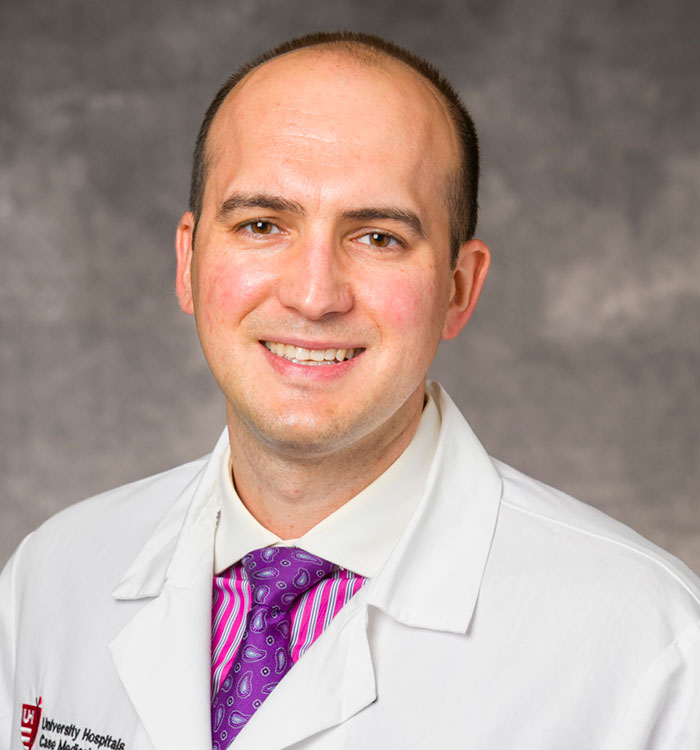Intraosseous Co-Transplantation Shows Better Engraftment in Stem Cell Transplant
May 08, 2017
Results of study lead to first-of-its-kind Phase I clinical trial at UH Seidman Cancer Center
Hematopoietic stem cell transplantation (HSCT) is rife with challenges. A large percentage of transplanted cells never reach their destination in the bone marrow. Plus, one-third of HSCT candidates don’t have an HLA-matched donor. These patients can use umbilical cord blood, but the smaller cell dose often results in slow or poor engraftment.
Fortunately, a team from UH Seidman Cancer Center has identified a potential way around these challenges. They’ve found that combing umbilical cord blood with mesenchymal stromal cells (MSCs) and injecting the combination into the bone marrow leads to better engraftment than shown in other strategies.
 Leland Metheny, MD
Leland Metheny, MD“Combining the two things – injecting into the bone marrow and administering a nurturing cell like a MSC -- leads to improved engraftment in preclinical models of transplant,” says UH Seidman hematologist Leland Metheny, MD, Hematologist, University Hospitals Seidman Cancer Center; Instructor, Department of Medicine, Case Western Reserve University School of Medicine, lead author of a recent paper in the journal Hematology and Medical Oncology describing the findings. “But we also showed that immunologic cell engraftment – B cells and T cells – was improved as well. Potentially there is greater immune reconstitution in those populations.”
“In Europe, there have been a number of intraosseous infusions of umbilical cord blood that have shown better or comparable engraftment as with double umbilical cord blood given intravenously. Perhaps we can even improve on that with single cord intraosseous administration and MSCs,” says Dr. Metheny.
Dr. Metheny also points to the unique qualities of MSCs as pivotal to engraftment success.
“MSCs can differentiate to other cells that are of mesenchymal lineage, like fat and fibroblast, but they can also differentiate into cells that nurture the bone marrow,” he says. “In general, the thought has been that they secrete pro-growth and pro-differentiation signals to the bone marrow, but they can also help in many ways deliver nutrients to the bone marrow itself. They wrap around the blood vessel and help provide cytokines and other unknown positive signals to the bone marrow.”
Because of the encouraging results in preclinical models of bone marrow transplant, the UH Seidman team has opened a Phase I trial of the approach for high-risk patients.
“We’re enrolling high-risk patients who wouldn’t have a transplant otherwise,” Dr. Metheny says. “Right now, our focus is on making sure the procedure is safe. To date, we haven’t seen anything particularly unsafe about this. People handle the procedure very well – it can even be done at the bedside. Overall, our results support and form the basis for a new method of umbilical cord blood transplantation that can be translated into clinical practice.”
For more information on this Phase I clinical trial or to refer a patient, email Cancer.Innovations@UHhospitals.org.


